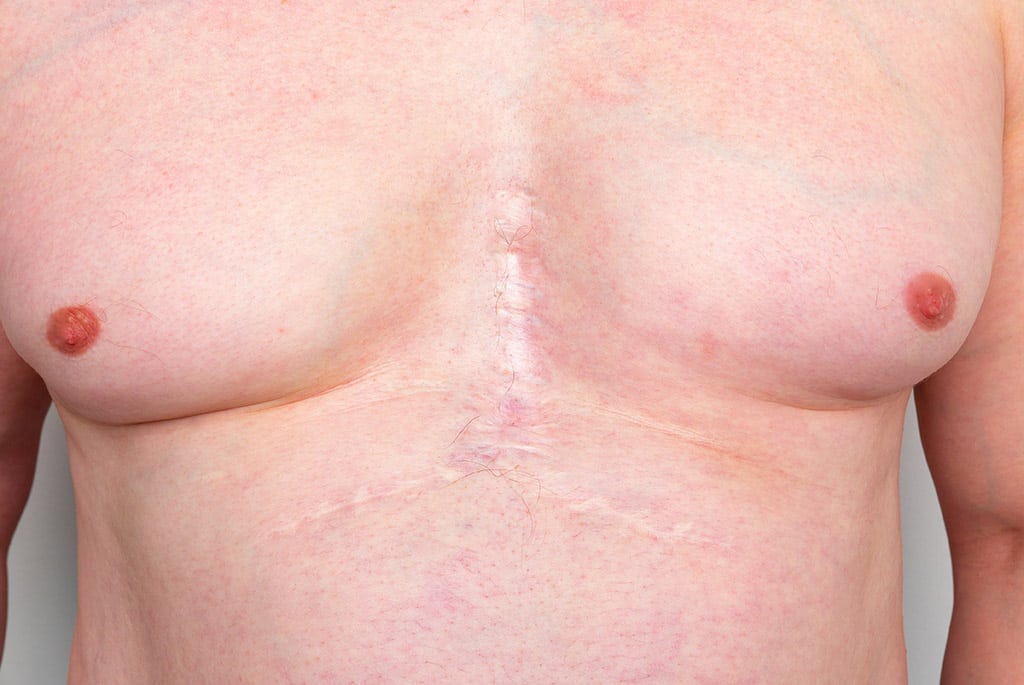What is Surgical Scar Revision?
Scarring can be an unavoidable consequence of healing from an injury, burn, wound, acne or surgery. When the skin is wounded, a complex series of events takes place which aims to prevent infection, preserve function, and restore the skin’s contour to its original form. Depending on how deep a skin injury is, the wound may heal beautifully with no apparent scarring, or it may leave a raised or depressed red, white, or pink line. Although the body attempts to recapitulate normal skin, the healing process is imperfect and scarring is a mark of the body’s best attempt at restoring normality. Many internal and external factors affect the likelihood of scarring. Poor nutrition, inadequate wound care, and smoking can all negatively impact the healing process and worsen scarring. Alternatively, excellent wound care, thoughtful nutrition, and seeking medical care early can optimize your chance of minimal scarring.
Facial scaring is one of the most difficult challenges for a cosmetic surgeon. Our reconstructive and cosmetic surgeons must consider not only your appearance, but also the form and function of the tissue. Scars near the eyes can pull at the eyelids, creating chronic tearing and dry eyes that can eventually cause permanent damage or even blindness. Scars near the nose and mouth can affect breathing and eating. Facial scars are also quite visible and can cause significant personal distress and reduced self-esteem.
Surgical scar revision can improve the appearance of scars, and in some cases, relocate a scar to a less obvious location. Surgical scar revision can also reduce tension and improve the function of joints, if scarring has caused limited mobility. We often combine surgical techniques with laser treatments to further refine and reduce the appearance of scars. In fact, our office routinely uses fractionated erbium or CO2 lasers at the time of surgical scar revision to optimize results. Our goal is to minimize the appearance of your scar to make you more comfortable with your appearance and improve your outlook.
A variety of surgical techniques are available for scar revision. Often a combination of techniques will provide the best cosmetic outcome.
Considerations in surgical scar revision:
- The type of scar, its depth and location determine the appropriate treatment.
- Age, sex and your genetic and ethnic makeup are important considerations.
- Facial scars can affect esthetic appearance and facial expressions, and it is crucial to restore and preserve facial symmetry when revising scars in this area.
- Acne scars are common and have many subtypes. Some are best treated with surgical intervention, but others may be better targeted by lasers, dermabrasion, injectable fillers or microneedling.
- Burn scars that cover large areas of the skin tend to pucker when they heal. This is called contracture because the skin contracts during healing. Contracted scars over joints are particularly problematic because they can reduce normal range of motion. Often, contracted scars require a series of laser treatments in addition to possible surgical release of excess tension for optimal results.
- Removal of skin cancer with MOHS surgery will produce cosmetically acceptable scars when performed by board-certified, fellowship trained reconstructive surgeons like those at Moy-Fincher-Chipps. But, facial scars from older treatments or older repairs may require revision to achieve cosmetically acceptable solutions.
- The timing of surgical scar revision is important and depends on the scar’s location and age of the scar, as well as patient’s age and skin type.
- Scars that are pink or brown in color may require laser treatments to address and correct these color problems.
- Scars that are thick and ropey or painful may require steroid injections for flattening.
Surgical options include Z-plasties and other skin flaps to reorient scar lines, skin grafts, direct excision, dermabrasion, and laser surgery. Your options will be discussed with you at your consultation. But you should be aware that at times, in order to achieve optimal improvement, more than one procedure may be needed.
When is scar revision surgery recommended?
Scars tend to improve on their own as they mature. It takes about 12-18 months for a scar to mature. But, signs that a scar is worsening or not healing appropriately may require intervention before this time. We will discuss the best approach for your scars and give you realistic expectations on what can be achieved with our state-of-the-art technologies.
Although scar revision surgery does not completely erase scars, it makes them much more cosmetically acceptable. When combined with dermabrasion or laser resurfacing, revised scars may become nearly imperceptible.
Improving the appearance of your scars can change the way to feel about yourself.
Moy, Fincher, Chipps Facial Plastics and Dermatology in Beverly Hills specializes in surgical and minimally invasive scar revision procedures. Scar revision procedures are available to treat raised, recessed, obvious or painful scars, and blend them with surrounding skin.
Surgical scar revision will improve how you look and feel about yourself. We look forward to discussing your scars with you during a personalized consultation.






